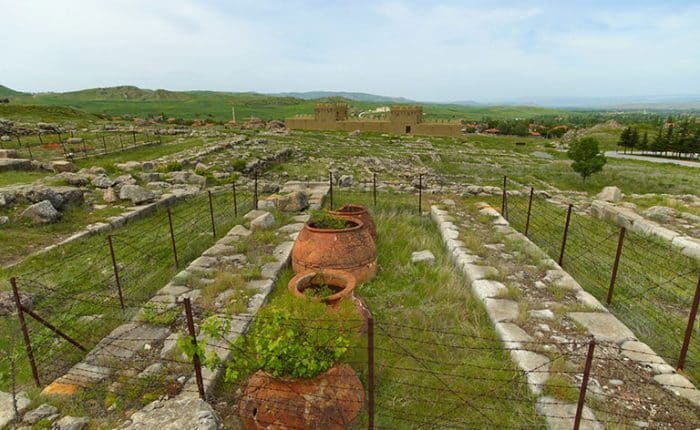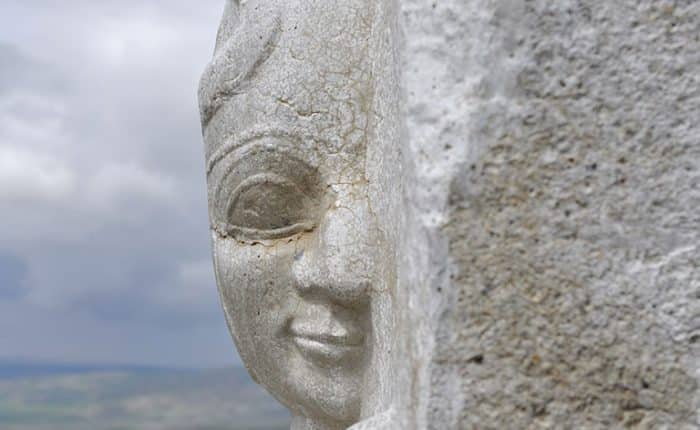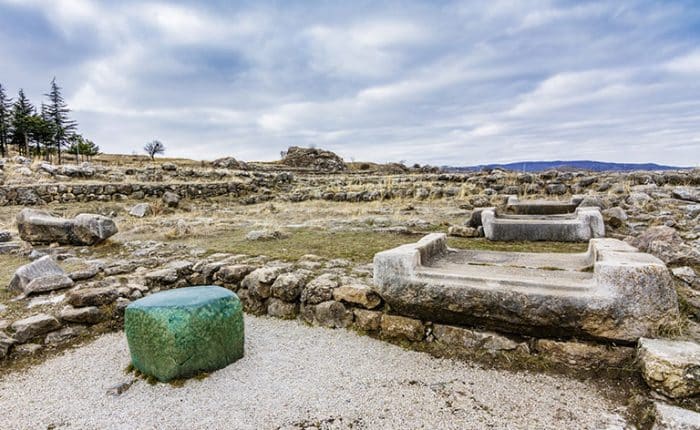Hattusha was the capital city of the Hittite Empire between 1650 BCE to 1178 BCE. It was among the largest cities of its time, and its influence extended far beyond the boundaries of its kingdom.
The Hittites controlled numerous territories, and it served as one of the most important trade centers in the ancient world.
Hattusa was expanded and rebuilt several times during its reign. The last significant expansion of the city occurred during the reign of King Tudhaliya V, who commissioned a new palace and a renovated temple.
If your Turkey itinerary includes Hattusa, you might want to pack lightly. In July (the hottest month), evenings can get cool in Hattusa. Therefore, you should pack a light jacket for evening excursions.
The average time to complete a tour of Hattusa is a full day, but it can take two days if you plan to view every sight, including the museum.
If you are driving from Ankara or Cappadocia to Hattusa, the road trip will take about 3 hours. So, you should choose a hotel where you can stay the night before you leave for Hattusa if your flight arrives at night.
Depending on the season, the best time to visit Hattusa is during the summer. The coldest month is January. The month has an average temperature that ranges between 6°C and-8C.
July is the warmest month. The maximum temperature is about 25°C. The weather can get hot during the summer, but the evenings are usually cooler.
A lot of people visit Hattusa. However, traveling during the warmer months means shorter lines, fewer crowds, and less competition for souvenirs.
You may also enjoy the festivities held at Hattusa during the winter holidays. If you travel in January, you’ll have the added advantage of witnessing the New Year celebration.
When visiting Hattusa, you cannot miss the pleasure of trying some of its local specialties. Even if you have not tried Turkish food before, the food there draws its influence from Anatolian cuisine.
Keskek is a dish that has either chicken or lamb meat and stew made from wheat or barley flour and served with a variety of vegetables. Another local favorite is gozleme, a traditional flatbread stuffed with meat, cheese, or vegetables, and it is often served with ayran, a yogurt drink.
While dining in Hattusa, you should not leave without trying a drink called serbet. It is a drink made from fruits and spices; some variations include things like rose water.
When traveling to Hattusa, the last thing you want is to be taken aback when faced with a new culture or unaware of generally accepted standards of etiquette. When in doubt, however, be sure to ask your guide.
Some of the do’s and don’ts when touring Hattusa are:
Dress appropriately: while packing for travel, pack long sleeves of pants and shirts with appropriate hiking shoes for a comfortable exploration around the ancient site.
Don’t wear slippers or flip-flops inside the ruins: you will be expected to cover your feet when visiting the ruins of ancient Hattusa.



A UNESCO World Heritage Center, Hattusha is one of the most impressive archaeological finds in the region. One of the most powerful empires of antiquity once resided in its vast palace complex. Some of the notable sites include:
During your visit to Hattusa, you should pay special attention to the Great Temple. It was dedicated to the ancient gods of weather and the sun and is an excellent example of how the ancient Anatolians worshipped nature. A temple devoted to the weather gods would have been influential in a region with a solid connection to agriculture.
The Temple’s foundation was laid in the 14th century BCE and was probably destroyed around 1200 BCE. It is among the best-preserved temples of its type in Hattusa.
Cuneiform tablets were found in the Temple. These tablets contain a collection of writings and historical documents. You can see how the empire functioned during its peak period. During excavations, huge clay storage jars were also found here.
Although most of the Temple was destroyed, the compound still has numerous examples of the craftsmanship used in the site’s construction.
Yer Kapi is a 3-meter high, 70-meter long tunnel dug beneath an artificial hill whose function remains unknown. Speculations include a tomb or a passage to the underworld, but the most likely explanation is that it was an entrance to a defensive fortress.
It’s also possible that it may have served as a lookout post for the city walls. In any case, it’s an eerie passage, but back then, it would have been bathed in light from the floor that was once paved in white.
The ingenuity of the builders and architects of the time is reflected in the fact that you can still go through the tunnel centuries later.
Locals refer to it as a wish stone, which stands out for its size and color. Although similar stones are common in the area, the green cubic stone’s shape, hue, and height is unlike anything found in Hattusa.
The consensus is that Ramesses of Egypt gave it as a gift to the then Hittite King Hattusili III in gratitude for signing a peace treaty. But, of course, it is a theory not backed by any evidence.
Its reflective look, unusual shape, and green color may have originated from a natural mineral deposit formed in the rock around the stone.
The citadel sat on the highest point of Hattusha. The most important place in the old Hattusa Empire, the citadel, was a military stronghold and the seat of power.
From the ruins, it is clear that it had a courtyard, the King’s living quarters, the state archives, and buildings of a religious nature. The entire complex covered an area of about 35,000 square meters.
Since you will be already in the region, it would be ideal to spare another day for Yazilikaya and Alacahoyuk. After this off-the-beaten trip, you can continue your Turkey trip with Sivas and Erzincan to the east, or Safranbolu, Sinop, Samsun, and more hidden gems on the Black Sea till the borders of Georgia.